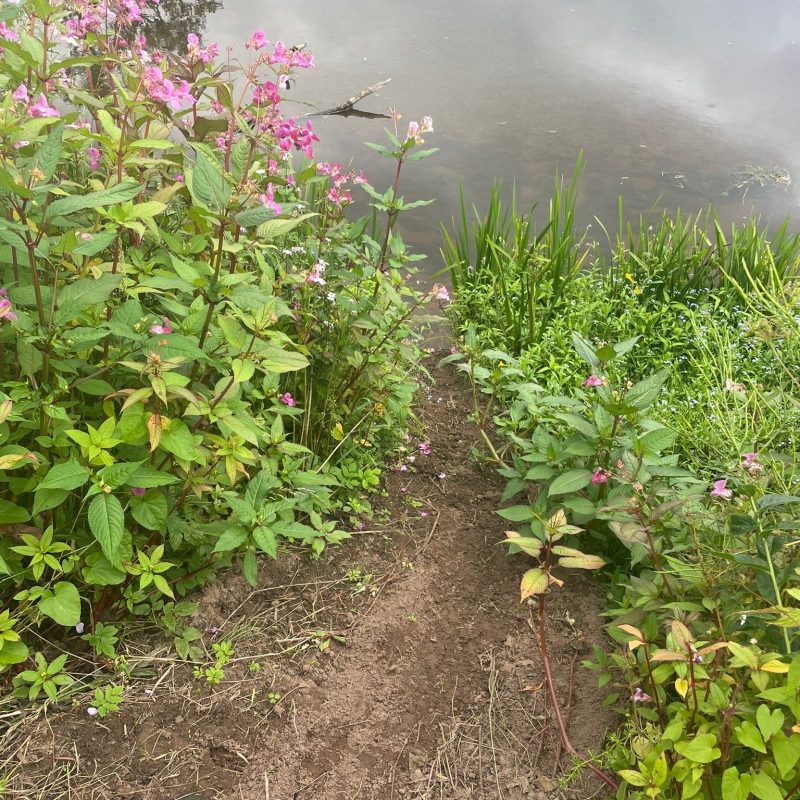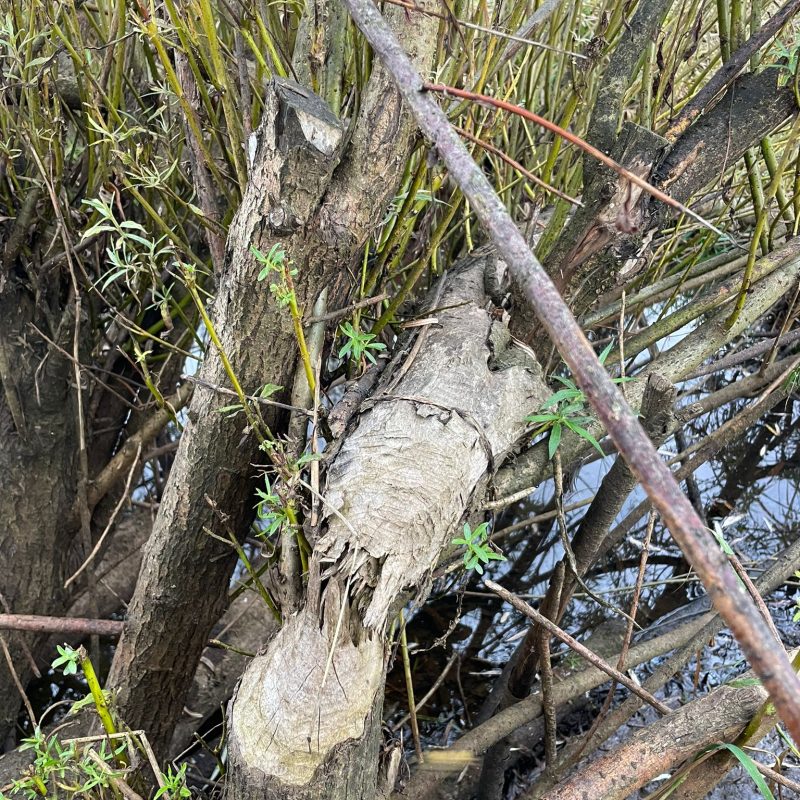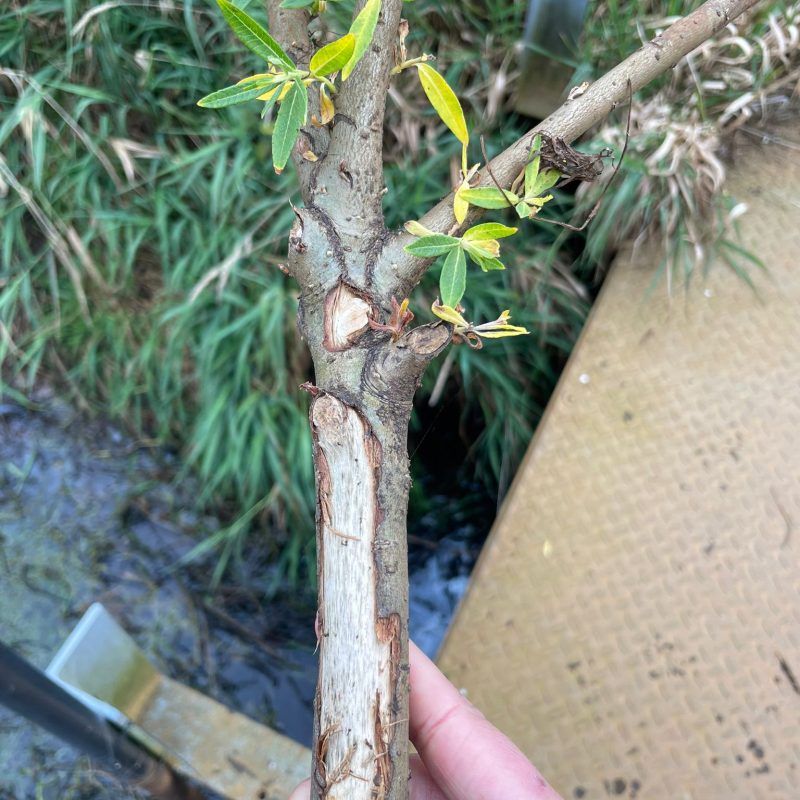

The UK’s rivers are teeming with all sorts of wildlife, from the scampering water voles to the graceful otters. One more recent addition to this list in the Loch Lomond catchment, are beavers. Beavers were hunted to extinction in the UK 300-400 years ago for their meat and fur. However, in recent years beavers have been reintroduced to Scotland. We now have a small population living in the Loch Lomond catchment!

Beavers are a large rodent whose diet consists of river vegetation and woody plants. They are recognisable from their large, broad tail, large yellow teeth and round body.
Beavers are mainly active during the night therefore, spotting them can be tricky!
We recommend going out at dawn and dusk to try and spot a beaver. However, you can also look out for signs of beavers. So don’t worry, we are here to tell you about the signs you can look out for to spot a beaver and even find out what it has been up to during its nightly excursions!

Beavers aren’t the most graceful animals! So to get back into the water after roaming the bank for food and building materials, they slide down the bank. This leaves a slide mark perpendicular to the river which can be used to spot where a beaver has been active. Otters also use this technique therefore, it can be difficult to tell the difference. Otter slides are usually thinner but to really know if it is a beaver slide look out for the other signs mentioned below.
Beavers feed on and use woody plants to help form their dens. This results in them leaving chewed stumps of wood, easily recognisable due to the teeth marks left in the wood. You can also tell how long ago they chewed the wood from how fresh the cutting looks. This can help you work out if the beaver is currently using that area or where it’s been in the past.


Beavers sometimes strip the bark off branches for a snack, leaving peeled sticks behind. However, deer do this too! To know if it’s a sign of a beaver, look out for other clues like chewed stumps or the telltale trails they leave behind.
Beavers like to use the same areas to feed and therefore, flatten down paths for themselves to get around the banks. So, keep an eye out for well-trodden trails leading from the water’s edge and into the vegetation. If you see a path that looks like a mini beaver highway, you might be hot on their trail!
Once beavers are set up in an area they will start using branches and woody debris along with mud to make their lodge. This will keep them safe from predators and can be a place to have kits! The entrance for the lodge is usually underwater so predators can’t get in, so to see the entrance you might need to go at low water levels. The lodges look different for individual beavers but usually consist of woody debris and mud.
These are just a few beaver signs to look out for on your next riverside adventure. If you are interested in how the LLFT is involved in some beaver monitoring in the Loch Lomond catchment follow this LINK.
Additionally, for more beaver signs to look out for check out the Eurasian beaver handbook by Campbell-Palmer.
Beavers are back! So get outside and look for these signs and you can watch these amazing animals make themselves at home again in the UK.